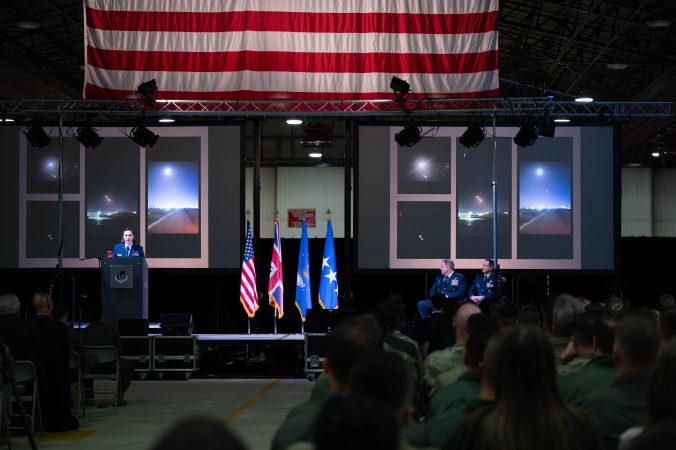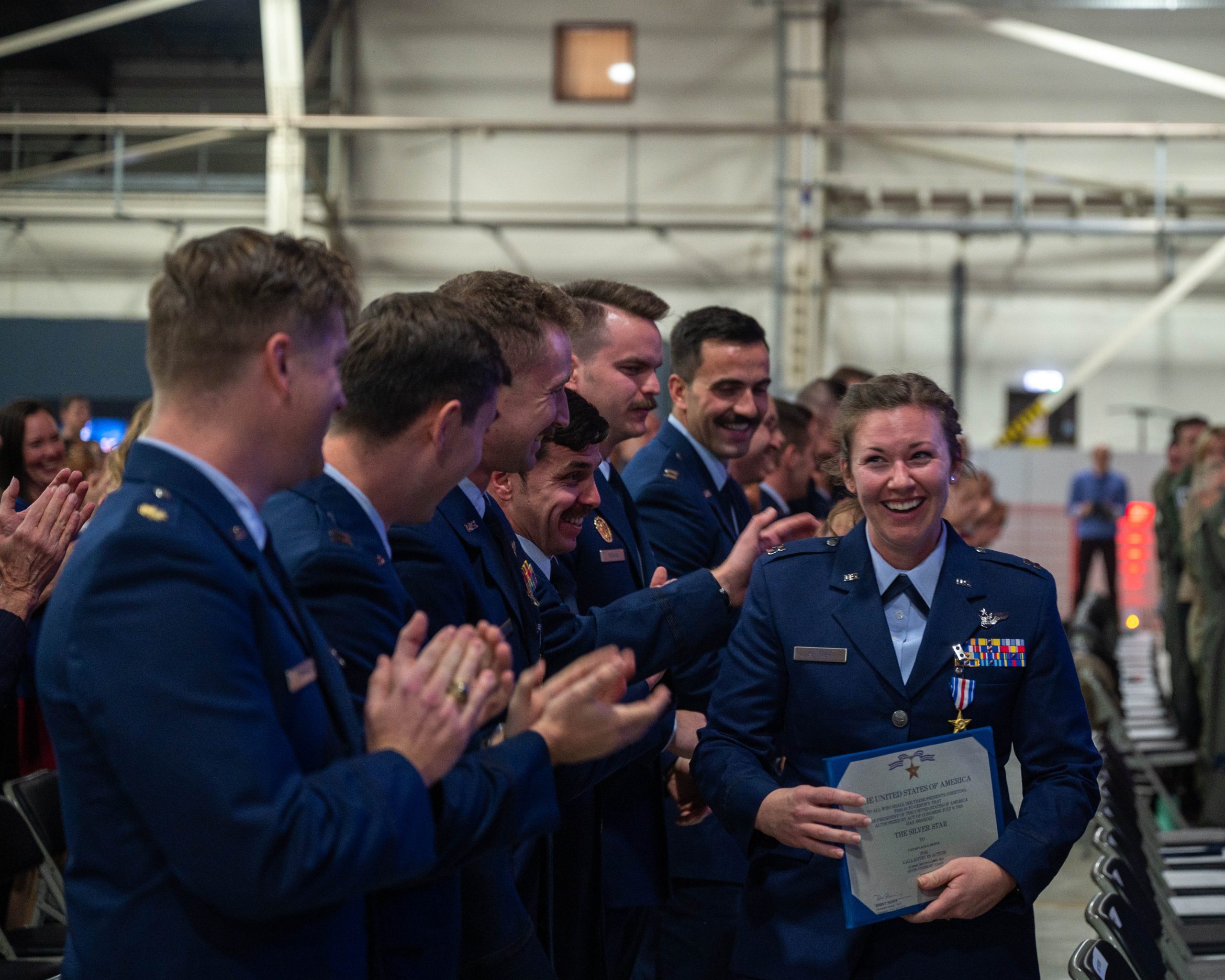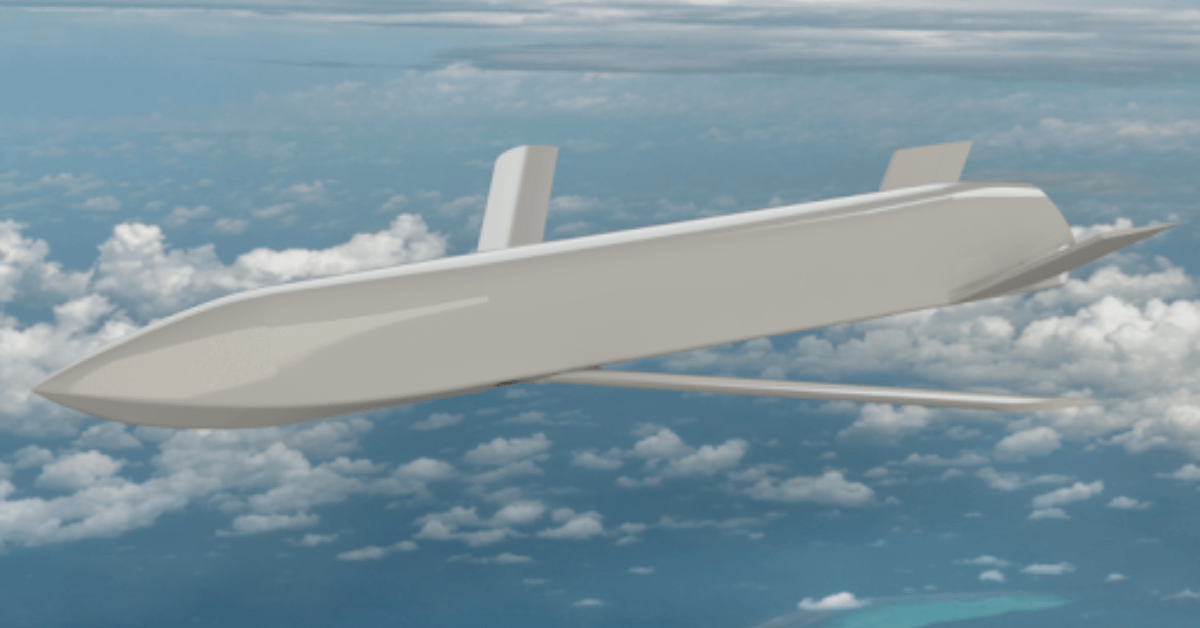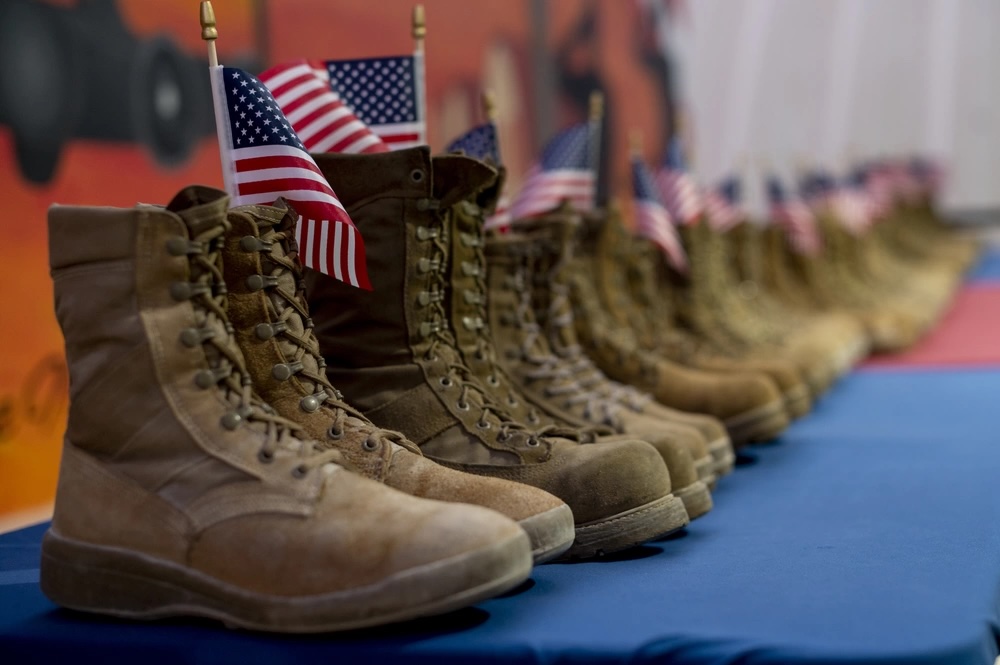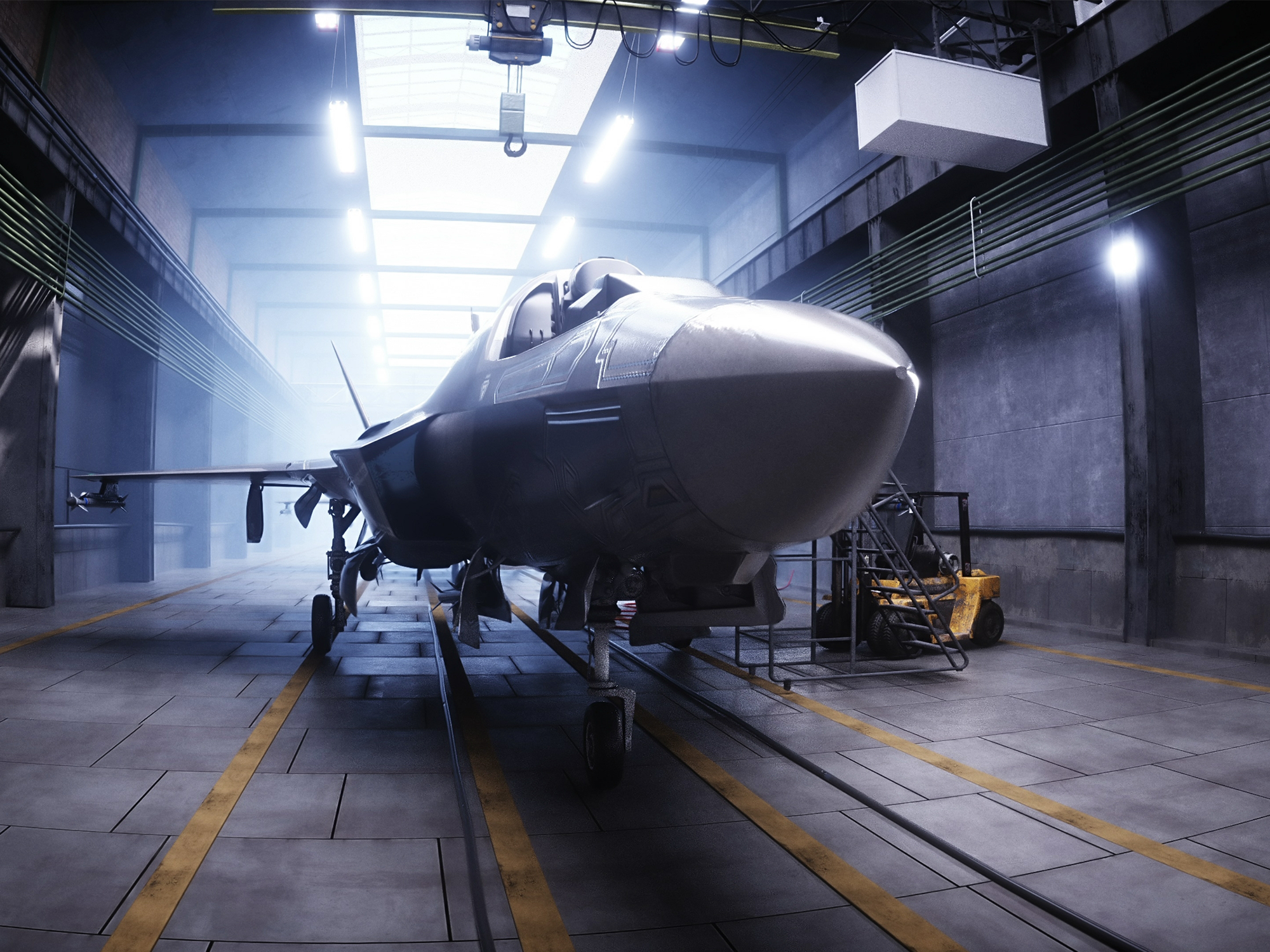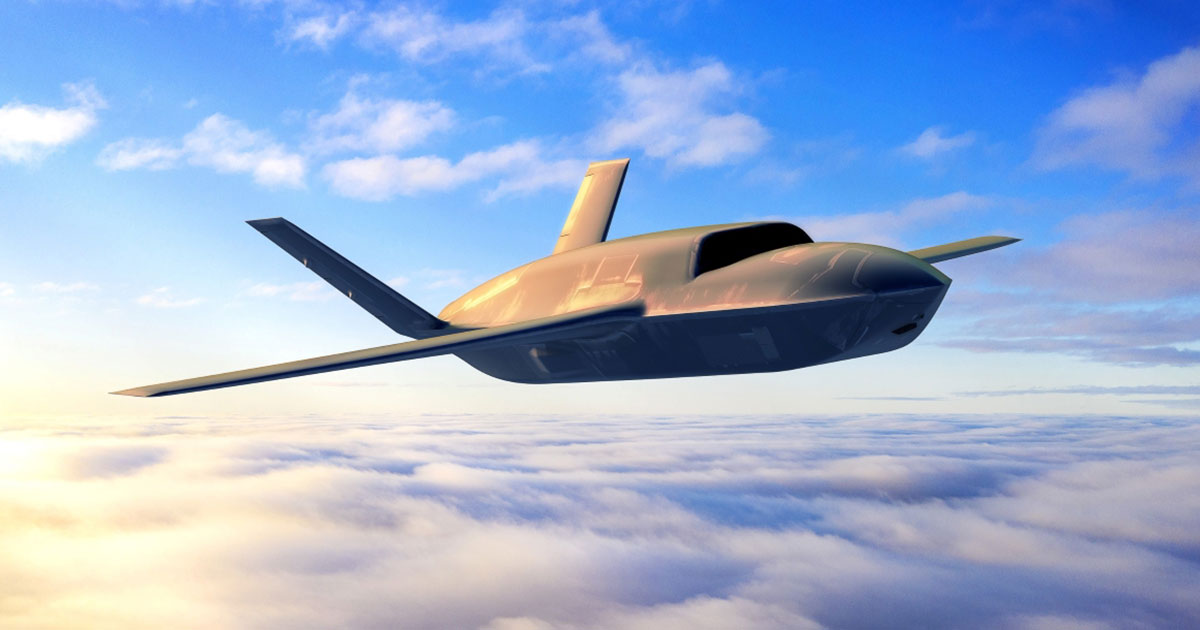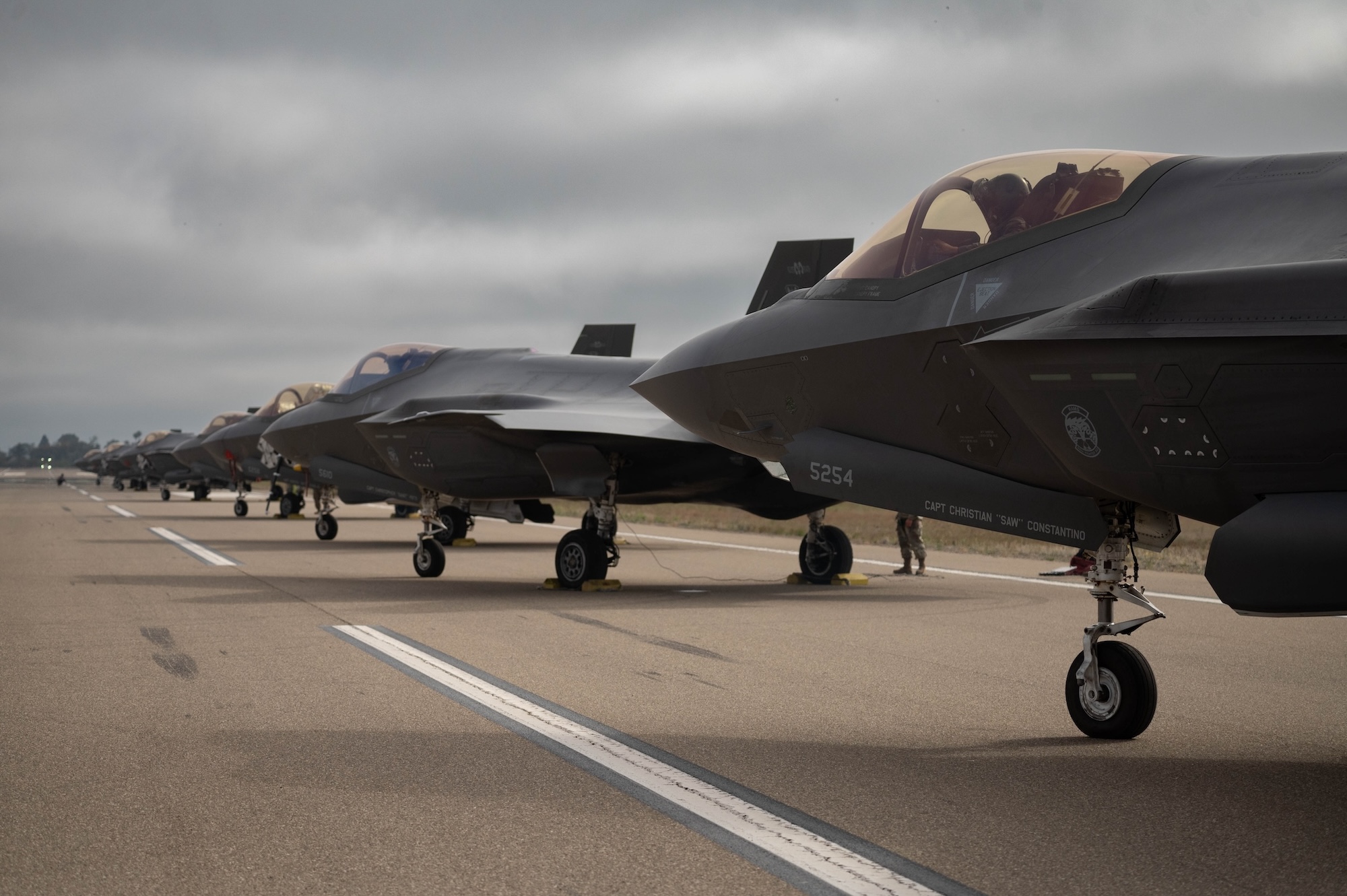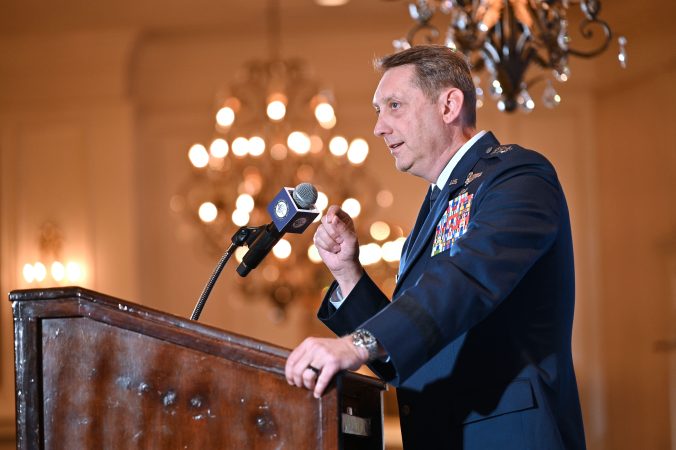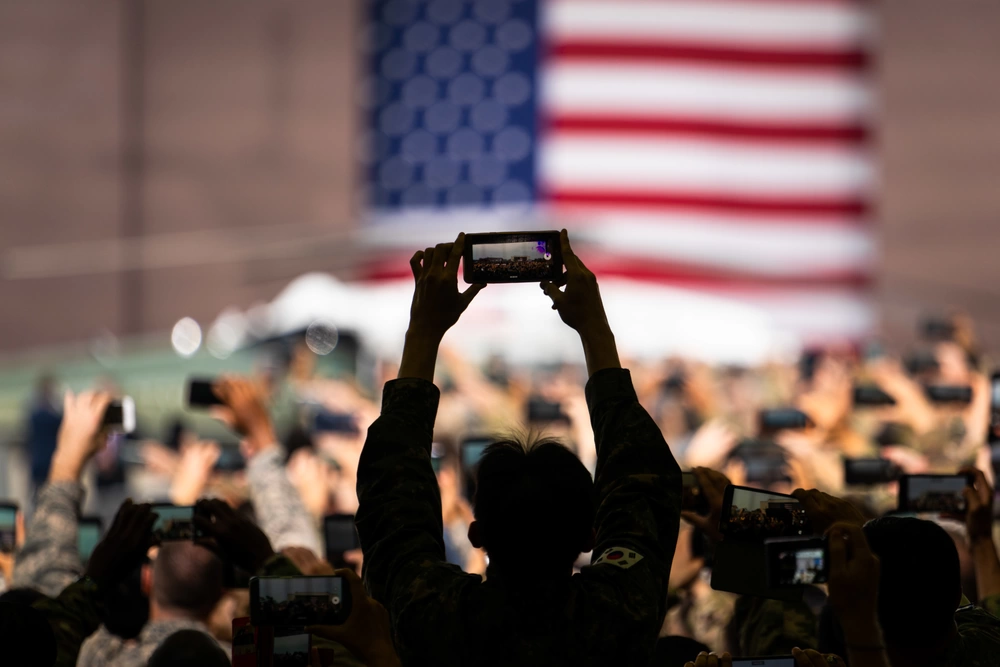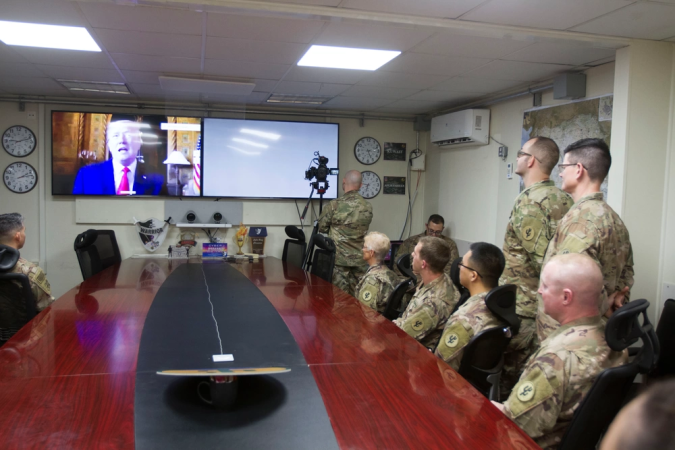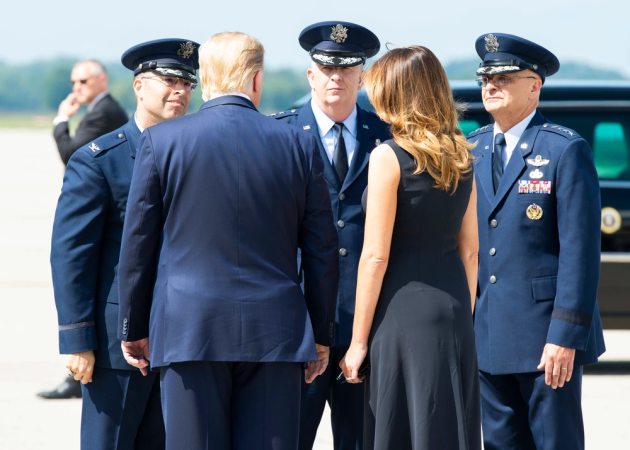This is the first in a multipart series based on exclusive interviews with nine Airmen who helped respond to Iran’s April 13 attack on Israel. For the rest of the series, read Part 2, ‘Air Force Fighters Kept Going Amid Chaos’ and Part 3, ‘Did We Do Enough?’
RAF LAKENHEATH, U.K.—Flying their F-15E Strike Eagle through the Middle Eastern night on April 13, pilot Maj. Benjamin “Irish” Coffey and weapons system officer Capt. Lacie “Sonic” Hester anticipated picking up signs of Iranian one-way attack drones and missiles launched at Israel.
Sure enough, Coffey said, “we get a radar hit, and another, and another, and another.” To be sure the blips were missiles and not cars on the ground, Hester cued the jet’s air-to-ground targeting pod to get visual confirmation.
“She recognizes there’s no roads in that area. It’s just open desert,” Coffey said. “So all these radar hits that we get, 20 to 30 of them at that initial [sweep], were real, and they were headed west.”
Those hits represented the leading edge of some 300 ballistic missiles, cruise missiles, and one-way attack drones in a barrage that was Iran’s first-ever direct attack on Israel and perhaps the largest drone attack in history.
USAF fighters helped defeat the attack, downing 80 drones in one of the largest displays of combat airpower in decades. On Nov. 12, U.S. Air Forces in Europe commander Gen. James B. Hecker decorated 30 Airmen at RAF Lakenheath for their contributions to that mission, awarding Coffey and Hester Silver Star Medals for their heroism.
The events of April 13, Hecker said at the ceremony, were a clear sign that “the nature of warfare has changed, especially when it comes to … one-way UAVs.”
The 494th Fighter Squadron, nicknamed the Panthers, deployed to an undisclosed Middle East location in October 2023 after Hamas’ attack Oct. 7 attack on Israel, and over the course of the next five months downed several Iranian one-way attack drones, breaking new ground for the Air Force.
Iran’s drones have been a common feature in Russia’s war on Ukraine, but the U.S. did not have much experience countering those threats, a niche weapon that falls between a missile and air-to-air combat.
Coffey took that experience, “essentially reviewing everybody’s tapes … and then everything he had known and studied,” said Capt. Brian Tesch, a young weapons system officer with the unit. “He wrote a paper of like, ‘Here’s how you will execute if you find a drone out there.’”
Coffey’s tactics development soon proved crucial. Israel launched an attack that killed senior figures in the Islamic Revolutionary Guard Corps in Syria on April 1, and Iran vowed to retaliate. The 494th braced for the response.
“We were on kind of an alert status for about a week, week and a half, leading up to that point,” said Maj. Clayton “Rifle” Wicks. “We knew that there was going to be some sort of large-scale attack. How big we didn’t quite know, and when exactly we didn’t quite know.”
Anticipating that the attack would likely come at night, the squadron kept at least two jets in the air, plus extra crews on the ground ready to go within 30 minutes. The days dragged on. Then, on April 13, Coffey and Hester were one of the crews scheduled to fly the first six-hour shift, alongside squadron commander Lt. Col. Curtis Culver and Lt. Col. Timothy Causey. Wicks, having flown the night before, was the “operations supervisor,” acting as a liaison with the Combined Air Operations Center and other command-and-control elements.
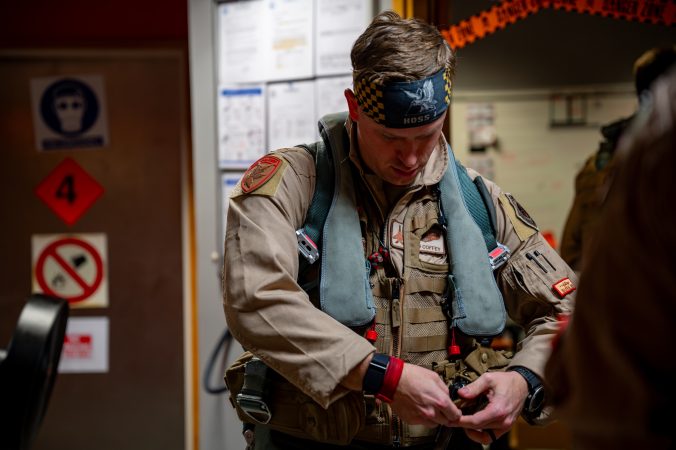
“There were a couple nights leading up to that point where we’re like, ‘tonight’s going to be the night, or we think tonight’s going to be the night,’ and then it wouldn’t happen,” Wicks said. “So then April 13 rolls around, it was kind of like that again. I didn’t show up for my shift that night being like, ‘tonight’s the night.’”
Capt. Matthew “Pepper” Eddins and Capt. Garrett “Bull” Benner were one of the crews on alert status. They too “didn’t really think much was going to happen that night, to be honest,” said Benner.
Intelligence reports suggested otherwise. Wicks began giving crews whatever new information he got as they walked out the door.
“Things were just happening so fast out there that it was pretty much a sort of a pickup game. … I remember feeling guilty that I couldn’t do more for them, before launching my friends out into the darkness to who knows what,” Wicks said. “So that part was tough.”
The alert crews—Eddins and Benner and Capt. Austin Leake and Capt. Stepan Volnychev—took off with the first scheduled formation, putting four aircraft in the air. F-15s from the 335th Fighter Squadron at Seymour Johnson Air Force Base, N.C., which had just deployed to the region, were also airborne, as were F-16s from the D.C. Air National Guard’s 113th Wing. Wicks was monitoring a command-and-control feed when the F-16s started to engage.
“A message comes across that just says … like Viper 72 is ‘Winchester,’ which means they are out of missiles. They have no bullets left. They have nothing,” Wicks said. “And I remember, I got chills, and the hair on the back of my neck stood up, because that was the first time I was like, ‘Oh my gosh. Command and control can’t keep up with the amount of missiles that are being shot and things that are happening.’ And that’s the only message they got across.”
In the air, Coffey and Hester were tasked as mission commanders, responsible for multiple “lanes” of airspace that the formation had to defend. Now, they faced an attack on a scale they had never seen before—flying at low altitude into the night.
“I first get hit with dread, recognizing the numbers we were seeing,” Coffey said. “This wasn’t a small-scale or a chest-thumping show of force. This was an attack designed to cause significant damage, to kill, to destroy, and now we are on literally the leading edge of firepower, able to try to do something about that. And that lasted maybe for 10, 15 seconds, and then training kicked in, and it was time to get the job done.”
Confronted with more targets than they could possibly hope to take down by themselves, the aviators started prioritizing the one-way attack drones.
As Coffey and Hester directed aircraft where to go, the other aviators quickly fell back on their training and started executing.

“The first reaction, it was really exhilarating, a lot of adrenaline, especially to finally see the picture that we did see of the tons of radar contacts across the scope,” Benner said. “After that though, once we kind of realized that we were getting into a flow, then it was just fun.”
“As we’re turning away just so we can build some more space from the next wave, you look back and you see drones impacting the ground, like, ‘Oh, they got another one. They got another one,’” added Eddins. “Looking a few miles away, and you see another one impacts: ‘Oh, the Vipers got another one.’ And then you hear from your flight lead, Hey, turn hot, so pitch your aircraft back around and target again. ‘Here we go again,’ and it’s just almost repetitive at that point.”
It didn’t take long for every aircraft in the formation to exhaust their firepower. In the span of about 20 minutes, most of the fighters had fired off all eight of their air-to-air missiles. Coffey and Hester had “hung ordnance”—a missile that didn’t fire for one reason or another, and were forced to return to base, while Eddins and Benner waited another 10 or 15 minutes for more fighters to arrive with fresh firepower and to direct them using their own radar, before turning back themselves.
“I think that’s when I started to realize where the drones were and where we’re going, we’re somewhere around there, and if anything in this group gets through, then this is going to be a danger on the back end,” Eddins said. “So that kind of starts setting in. It really, really started to kick in when the ballistic missiles started blowing up overhead, as Israel started shooting them down.”
To complete the series, read Part 2, ‘Air Force Fighters Kept Going Amid Chaos’ and Part 3, ‘Did We Do Enough?’
494th Fighter Squadron Decorations
Silver Star Medal
- Maj. Benjamin Coffey
- Capt. Lacie Hester
Bronze Star Medal
- Maj. Clayton Wicks
- Master Sgt. Timothy Adams
Distinguished Flying Cross
- Lt. Col. Curtis Culver (V)
- Lt. Col. Timothy Causey (V)
- Capt. Logan Cowan (V)
- Capt. Gabriel Diamond (V)
- Capt. Trace Sheerin (V)
- Capt. Brian Tesch (V)
- Capt. Matthew Eddins (C)
- Capt. Garrett Benner (C)
- Capt. Austin Leake (C)
- Capt. Stepan Volnychev (C)
- Capt. Claire Eddins
- Capt. Carla Nava
- Capt. Kyle Abraham
- Capt. Eric Edelman
(V) indicates a Valor device, (C) indicates a combat device
Air and Space Commendation Medal
- Capt. Alexander Thennes
- Master Sgt. Michael Bialaski
- Tech. Sgt. Brandon Brown
- Staff Sgt. Sarah Moir
- Staff Sgt. Kendra Wertsbaugh
- Staff Sgt. Daniel White
Air and Space Achievement Medal
- Staff Sgt. Michael Wright
- Staff Sgt. Ethan Tarver
- Senior Airman Ardo Dia
- Senior Airman Sanders Joseph
- Senior Airman Rico Sanchez
- Airman First Class Treyvon Walker
